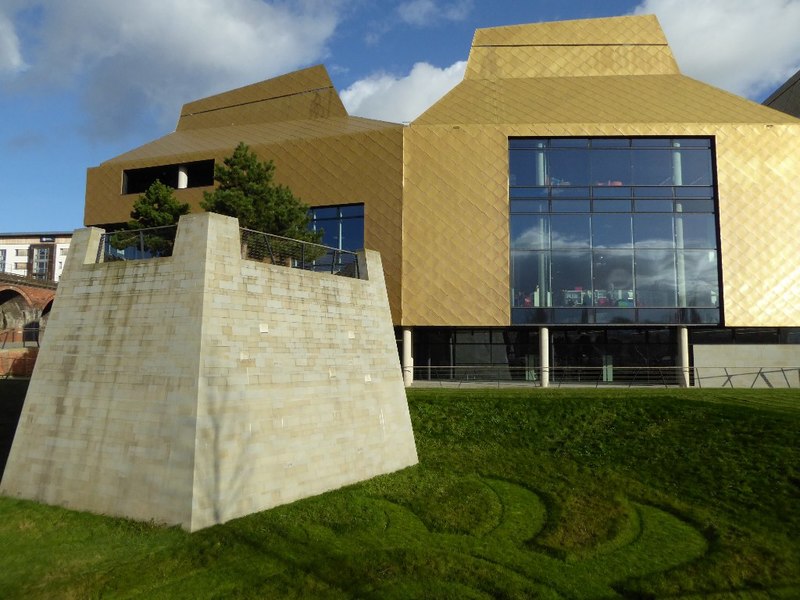Lobsters and libraries: why engagement with place matters
Higher education providers of all shapes and sizes can play the pivotal role in brokering relationships and supporting activities between government, industry, charity and place.
Serving communities is important. Deep listening, understanding and commitment is crucial if we are to address the severe inequalities found within almost every village, town and city in the UK.
Where does higher education feature in this? As many others have pointed out, many institutions feature place strongly in their names. (See the Civic University Commission’s report from earlier this year). Place, location and addressing inequalities is embedded in the way many providers operate. However, as I have previously blogged, we need to crack the higher education echo chamber we find ourselves in if we are to truly make positive changes in our communities and wider society.
The need to listen
“Students overfill bins so seagulls are well fed.”
“Student housing is of poorer quality than locals’ housing so seagulls nest there rather than in the cliffs.”
These statements are just two examples of how “the student” was perceived to cause problems in St Andrews (where I studied). It exposed the underlying tension between different communities and the institution: neither could exist without the other.
The main frustration at that time was often because the university did not seem to be listening to the permanent community on some of the day-to-day areas of good neighbourliness and was perceived not to care.
Reflecting on this years later has brought home to me the need to actively listen to your neighbours and that there is great potential in designing projects – be they research or teaching-based – together.
There is much power in community-led, practical research aimed at solving local problems as in thinking about the problems of tomorrow. It was a theme that came up at our annual conference for higher education leaders last week and the space that the newly relaunched Institute for Community Studies is working in.
Relevant research
Take the lobster. Lobster fishing forms an important part of the local Cornish economy and is an industry that suffered challenges in the 1980s when lobster levels fell. However a project being carried by a researcher based at Falmouth University has been helping to address this challenge. The researcher has undertaken work to redesign lobster pots as a low-carbon method of rearing lobsters with no feed costs. This has been done with a couple of small companies and The National Lobster Hatchery in Padstow, demonstrating the cross-regional linkages a smaller university can make to fulfil a local challenge.
And there is a financial result too: the project has gained further Innovate UK funding. This has the potential for scale-up nationally and to the international multi-billion dollar lobster industry. It’s a great example of where a smaller, creative-focused university can really tie into one of the communities it serves.
Considered engagement
Consider the University of Worcester and The Hive, pictured here. The Hive is Europe’s first fully integrated university and public library, jointly run and owned by the University of Worcester and Worcestershire County Council. The building is a meeting room, living room and reading room for the city, a space open to all with exhibitions, a business centre, council services, a café and a theatre.
You can see engagement and exchange in action, between young and old, traveller and inhabitant within one building which is infused with the identity of the city rather than just the institution.
How do you measure this?
How do you measure the value of this form of knowledge exchange where money rarely comes into the equation? How do you capture the essence of excellent engagement?
We’ve been working on how to capture such work as part of a wider project on how smaller and specialist higher education providers support their localities and the wider industries that they are crucial to (something we have written about previously).
As part of that work we’ve been looking into concepts such as social value measurement and how it can help capture the intangible. Social value, is, very simply, a way of looking at what matters to people by asking them and quantifying their responses to build up your evidence base (check out Social Value UK for a better explanation!). We plan to publish our reflections in 2020.
Regardless of measurement challenges, smaller and specialist higher education providers are embedded in place and in parts of the country that are often overlooked in policymaking, outside of London and the South East or working with communities experiencing exclusion and poverty. They are important pieces for their localities, towns and regions be that through teaching, research or wider engagement. National policy, such as the Knowledge Exchange Framework and Concordat, and funding schemes, such as the Higher Education Innovation Fund (HEIF) and the UK Shared Prosperity Fund (when it is launched), must get better at recognising and supporting their work. Overlooking such valuable work is done at the UK’s peril.
This blog is based upon a speech Matthew recently gave at a recent event on impactful knowledge exchange between higher education and the cultural sector run by The Culture Capital Exchange.

